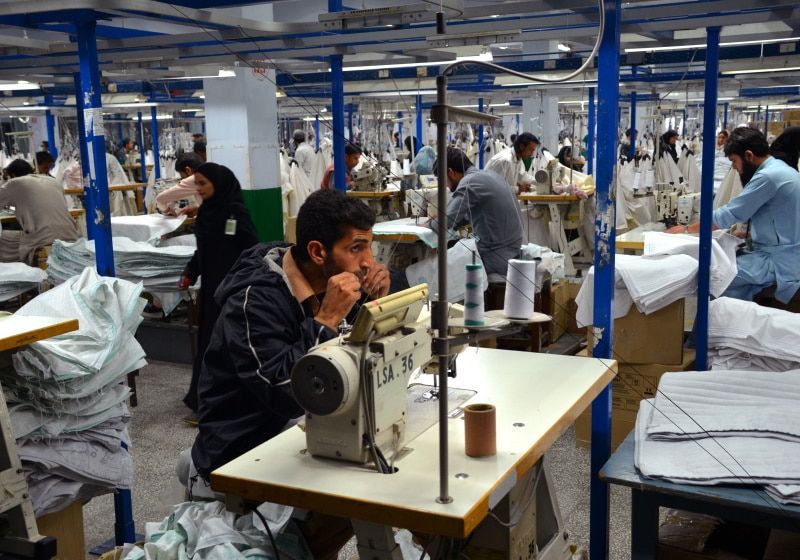Employment is one of the vital indicators of an economy’s performance. Therefore, it is significant to understand the dynamics of the labor market where various changes in employment due to structural shifts or different shocks can be captured.
According to the State Bank of Pakistan’s (SBP) report, “The State of Pakistan’s Economy,” there are 1.3 million new entrants in the domestic labor force every year in Pakistan.
Coupled with the labor market having to deal with several shocks, including the recent COVID-related lockdowns, made rising unemployment a real risk and a real fear for the public and government alike.
At the same time the analysis of the domestic labor market is challenging due to the limited availability of periodic datasets, the report confessed. The primary source of information on the labor market for Pakistan is the Labor Force Survey (LFS), which was last published for 2017-18.
However, the report did gather some insights into the labor force market in the country, such as the monthly surveys of industrial performance and employment conducted by provincial statistical bureaus, the employment index from the SBP’s Business Confidence Survey, and CPI wage rate data.
ALSO READ
SBP, World Bank & Govt Predict Different Numbers for GDP Growth
According to the collected employment data for the provinces of Punjab and Sindh, it appears that there was an improvement in the manufacturing sector during the Jul-Aug FY21 period compared to the peak-restriction period of mid-March 2020 to April 2020.
The increase in the employment index in the post-lockdown period is in tune with the recovery observed in large scale manufacturing, the report stated. The gradual ease in mobility restrictions since then explains the increase in employment in the industrial sector in these provinces.
During the initial phase of the lockdowns, as much as 10 percent of the industrial workers lost their jobs. Gradual ease in restrictions in the following months allowed some recovery. However, the industrial labor market had been unable to regain its pre-COVID level by the end-August 2020.
In particular, the province-wise data suggests that job losses in the manufacturing sector in Sindh were higher, and the pace of recovery was also slower. Higher job losses in Sindh can be linked to heavy monsoon downpour and subsequent flooding especially during August 2020 in the industrial hub of Karachi.
From a sectoral perspective, although there were job losses across the board during the peak COVID period, they were more noticeable in the sugar and leather industries. Compared to February 2020 levels, 23.5 percent of the workers lost their jobs during the lockdown period in the sugar industry.
Even after the lockdown was lifted, the sugar industry continued to post job losses. The leather industry also saw employments levels drop during the lockdown period. However, unlike sugar, jobs in the leather industry started to inch up in the post-lockdown scenario. As the restrictions were gradually eased, a few industries started to hire more workers.
Job opportunities in the cement and textile industry rose beyond the pre-COVID levels by August 2020. The positive developments are consistent with the growth in output of these industries. The output of the cement and textile sector grew by 22.8 and 2.1 percent in Q1-FY21, compared to the visible contraction of 12.8 and 33.9 percent in Q4-FY20.
Further analysis of wage rates points to similar trends within the skilled and unskilled labor force as described by the SBP report. The data showed that unskilled labor wages grew by 7.4 and 6.6 percent in rural and urban areas, respectively, during Q1-FY21.
ALSO READ
18.7% of Total Tax Revenue Goes to Pensioners: Study
Similarly, in the skilled labor category, growth of 9.8 and 6.4 percent was recorded for the rural and urban regions, respectively. The noticeably higher growth rate of wages in the country-side areas can partly be attributed to higher rural inflation (10.8 percent) as compared to urban inflation (7.5 percent) during Q1-FY21.
While the improvement in the available employment indicators owes to the resumption of economic activities after the lockdowns, the government and the SBP have also played a significant role in restricting job loss through their policies.
Accommodative fiscal and monetary measures were provided for the retention of employment and recovery of the labor market. In particular, SBP introduced the “Refinance Scheme for Wages to Prevent Layoffs,” specifically aimed at cushioning the COVID shock.
The report mentioned that the latest numbers show that the scheme prevented layoffs of more than 1.6 million workers across Pakistan. By September 2020, 83 percent of the total requested amount under the scheme was approved.
Moreover, other SBP initiatives like the Temporary Economic Refinance Facility (TERF) and Debt Relief Scheme also played a role in speeding up the recovery in various sectors, which eventually supported employment in the economy.
ALSO READ
Pakistan’s Economy Is Regaining Pre-Covid Trajectory: SBP
On the fiscal side, the government gave incentives to the construction sector, which is quite labor-intensive. This led to increased economic activity in the construction sector and facilitated its employment generation and retention.
Growth in construction-allied manufacturing sectors (such as cement and long steel) and an increase in rural and urban construction wages support this. Also, the government, through its Ehsaas Program for social support provided financial assistance to the highly vulnerable daily-wage laborers, the majority of whom lost jobs during the period of economic inactivity.


























